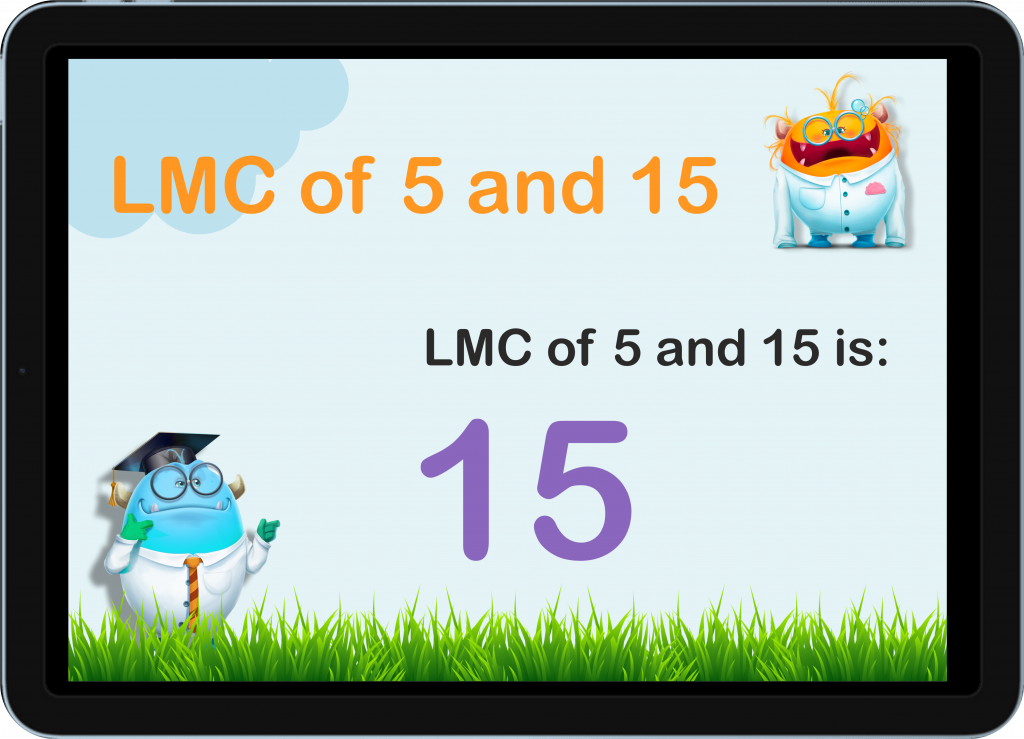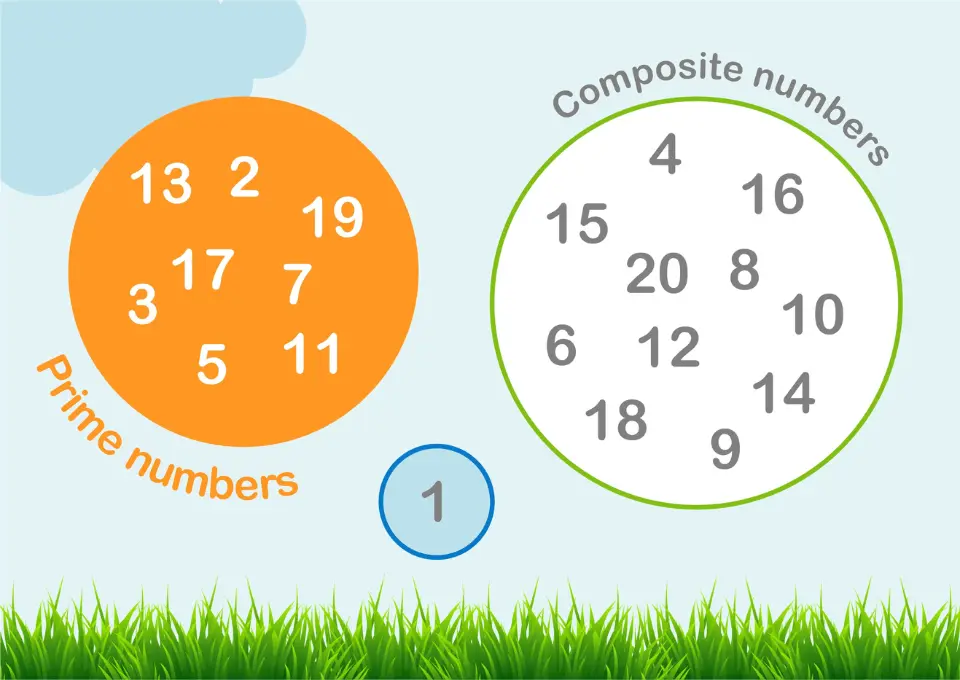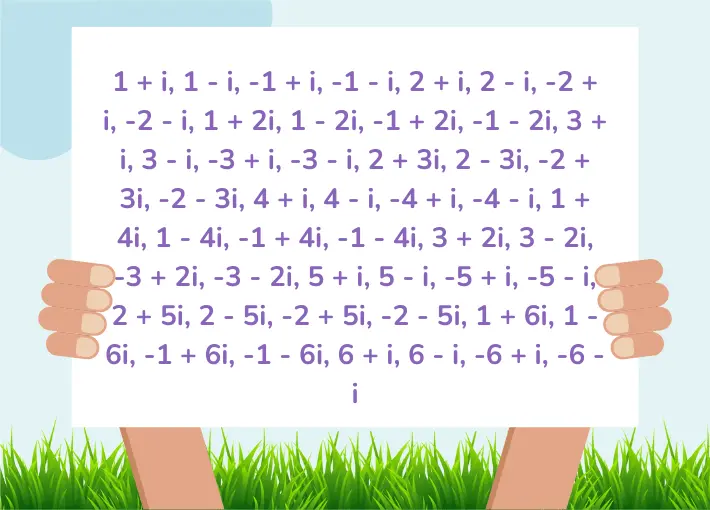Is 2 A Prime Number?
Prime vs. Composite Numbers
Greetings, young math enthusiasts! Today, let’s set sail on a mathematical voyage to determine if 2 is a prime number, and learn more about the difference between prime and composite numbers.

What are Gaussian Prime Numbers?
Gaussian primes are like magical numbers from a different world, existing in the realm of complex numbers! Let’s explore these special primes and uncover their secrets.


No credit card required

No credit card required
What is a Gaussian Prime?
What are Prime and Composite Numbers?
How Many Gaussian Prime Numbers Exist?
What is the Smallest Gaussian Prime?
The List of First 50 Gaussian Primes
What Other Kinds of Prime Numbers Are There?
What is an Gaussian Prime?
Gaussian prime numbers are special types of prime numbers that exist in the complex number system. They are named after the famous mathematician Carl Friedrich Gauss.
Unlike regular prime numbers, which are found on the number line, Gaussian primes are found in a grid of complex numbers, which have both real and imaginary parts.
What are Prime and Composite Numbers?

Before diving into Gaussian primes, let’s first understand prime and composite numbers.
Prime Numbers: Prime numbers are numbers greater than 1 that can only be divided by 1 and themselves. This means they have no other divisors. Examples of prime numbers include 2, 3, 5, 7, 11, 13, 17, 19, 23, and 29. For instance, 23 is a prime number because it cannot be divided evenly by any number other than 1 and 23.
Composite Numbers: Composite numbers are numbers greater than 1 that can be divided by more than just 1 and themselves. They have additional divisors. Examples of composite numbers are 4, 6, 8, 9, 10, 12, 14, 15, 16, 18, 20, and 21. For example, 21 is a composite number because it can be divided by 1, 3, 7, and 21.
How Many Gaussian Prime Numbers Exist?
In the world of complex numbers, there are infinitely many Gaussian primes. Just like regular primes, Gaussian primes go on forever. They are spread out in the complex plane, making them fascinating to study.
What is the Smallest Gaussian Prime?
The smallest Gaussian prime is 1 + i, where i is the imaginary unit. Other small Gaussian primes include 1 – i, -1 + i, and -1 – i. These numbers are prime in the complex number system because they cannot be factored into simpler Gaussian integers.
The List of First 50 Gaussian Primes

Here are the first 50 Gaussian primes:
1 + i, 1 – i, -1 + i, -1 – i, 2 + i, 2 – i, -2 + i, -2 – i, 1 + 2i, 1 – 2i, -1 + 2i, -1 – 2i, 3 + i, 3 – i, -3 + i, -3 – i, 2 + 3i, 2 – 3i, -2 + 3i, -2 – 3i, 4 + i, 4 – i, -4 + i, -4 – i, 1 + 4i, 1 – 4i, -1 + 4i, -1 – 4i, 3 + 2i, 3 – 2i, -3 + 2i, -3 – 2i, 5 + i, 5 – i, -5 + i, -5 – i, 2 + 5i, 2 – 5i, -2 + 5i, -2 – 5i, 1 + 6i, 1 – 6i, -1 + 6i, -1 – 6i, 6 + i, 6 – i, -6 + i, -6 – i
These numbers illustrate how Gaussian primes are distributed across the complex plane.
What Other Kinds of Prime Numbers Are There?
In addition to sexy primes, there are many other interesting types of prime numbers. Here are a few:
Twin Primes: Twin primes are pairs of prime numbers that differ by two. Examples include (3, 5), (11, 13), and (17, 19). Twin primes are very similar to sexy primes but with a smaller difference.
Cousin Primes: Cousin primes are pairs of prime numbers that differ by four. Examples include (3, 7), (7, 11), and (19, 23). The difference of four gives them their unique name.
Mersenne Primes: Mersenne primes are prime numbers that are one less than a power of two. For example, 3 and 31 are Mersenne primes. These primes are named after the French mathematician Marin Mersenne.
Fermat Primes: Fermat primes are prime numbers of a special form involving powers of two. For example, 3 and 5 are Fermat primes. They are named after the French mathematician Pierre de Fermat.
Sexy Primes: Sexy primes are pairs of prime numbers that differ by six. Examples include (5, 11), (7, 13), and (11, 17). The term “sexy” comes from the Latin word for six, making these primes easy to remember.
Lucky Primes: Lucky primes are lucky numbers that are also prime. For example, 7 and 13 are lucky primes. Lucky numbers are a special sequence of integers generated by a particular sieving process similar to the Sieve of Eratosthenes.
Emirp Primes: Emirp primes are prime numbers that become a different prime number when their digits are reversed. For example, 13 and 31 are emirps.
Happy Primes: Happy primes are prime numbers that are also happy numbers. A happy number is defined by a process where you repeatedly sum the squares of its digits until you reach 1. For example, 7 is a happy prime because it eventually reaches 1 through this process.
Conclusion
Gaussian prime numbers are an exciting and unique part of mathematics. They are prime numbers that exist in the complex number system, making them extra special. Understanding prime and composite numbers helps us see why Gaussian primes are so interesting. With infinitely many Gaussian primes, mathematicians have a fascinating set of numbers to explore.
Alongside other intriguing types of prime numbers like sexy primes, twin primes, and Mersenne primes, Gaussian primes add to the rich and diverse world of number theory. By learning about these different kinds of prime numbers, we can appreciate the beauty and complexity of mathematics.
Learn More About Prime Numbers
© 2024 Smartick. All Rights Reserved.
